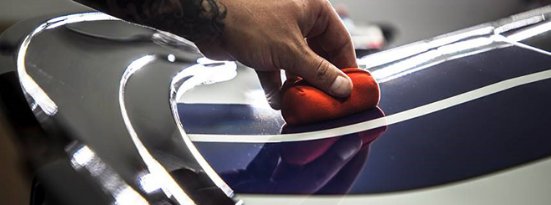Request a Call Back
How To Properly Clean And Maintain Microfiber Cloths
Microfiber cloths are great for cleaning because they are highly absorbent, trapping dust and dirt particles within their fibers. However, it’s important to clean and maintain them properly to ensure they remain effective over time. Here are some tips on how to properly clean and maintain microfiber cloths:

- Wash separately: Microfiber cloths should be washed separately from other materials. This helps prevent lint and other materials from sticking to the cloths, which can reduce their effectiveness.
- Use mild detergent: Use a mild detergent when washing microfiber cloths. Harsh detergents or fabric softeners can damage the fibers, reducing their effectiveness.
- Avoid hot water: Avoid using hot water when washing microfiber cloths, as it can damage the fibers. Instead, use warm or cool water.
- Air dry: Microfiber cloths should be air-dried to prevent damage to the fibers. Do not put them in the dryer or use high heat, as this can melt the fibers and reduce their effectiveness.
- Wash frequently: Microfiber cloths should be washed frequently to remove dirt and other particles that can build up on the fibers. How often you need to wash them depends on how often you use them and how dirty they become.
- Store properly: Store microfiber cloths in a clean, dry place to prevent mildew and other types of damage. Do not fold them or store them in a tight space, as this can damage the fibers.
- Don’t use fabric softener: Fabric softeners should be avoided when washing microfiber cloths because they can leave a residue on the fibers that reduces their effectiveness. Instead, use a small amount of mild detergent.
- Avoid bleach: Bleach should also be avoided when washing microfiber cloths because it can damage the fibers and cause them to break down over time.
- Don’t use heat: Heat can damage microfiber cloths, so avoid using high heat when washing or drying them. Air drying is best, but if you must use a dryer, use the lowest heat setting possible.
Also Read – Paint Protection Film
Things to Keep an Eye Out For When Washing Microfiber Cloths
When washing microfiber cloths, there are a few things to keep an eye out for to ensure they are properly cleaned and maintained. Here are some things to watch for:
- Lint: Be sure to wash microfiber cloths separately from other fabrics to prevent lint from other materials from sticking to the fibers.
- Fabric Softener: Avoid using fabric softener when washing microfiber cloths. It can leave a residue on the fibers, reducing their effectiveness.
- Heat: Do not use high heat when washing or drying microfiber cloths. High heat can melt the fibers and reduce their effectiveness.
- Bleach: Do not use bleach when washing microfiber cloths. It can damage the fibers and cause them to break down over time.
- Washing frequency: Microfiber cloths should be washed frequently to remove dirt and other particles that can build up on the fibers. If they are not washed frequently enough, they may become less effective at cleaning.
- Stains: If microfiber cloths have stains, it’s best to treat the stain before washing. Avoid using harsh chemicals, and follow the manufacturer’s instructions .
Also Read- Ceramic coating for bikes
Hand Washing Microfiber Cloths
Hand washing microfiber cloths is a great option if you want to be gentle with the fibers and avoid any potential damage that can come with machine washing. Here are some steps to follow when hand washing microfiber cloths:
- Fill a sink or basin with lukewarm water and add a small amount of mild detergent.
- Submerge the microfiber cloths in the water and gently agitate them for a few minutes. Be careful not to wring or twist the cloths too much, as this can damage the fibers.
- Rinse the cloths thoroughly with clean water until all the soap is removed.
- Gently squeeze out excess water, being careful not to wring or twist the cloths.
- Lay the cloths flat to air dry. Do not use high heat or put them in the dryer, as this can melt the fibers and reduce their effectiveness.
Also Read – Ceramic coating and automatic car washes
Machine Washing Microfiber Cloths
Here are some steps to follow when machine washing microfiber cloths:
- Wash separately: Wash microfiber cloths separately from other fabrics to prevent lint and other materials from sticking to the fibers.
- Use a gentle cycle: Use a gentle or delicate cycle when washing microfiber cloths to prevent damage to the fibers.
- Use mild detergent: Use a small amount of mild detergent when washing microfiber cloths. Harsh detergents or fabric softeners can damage the fibers, reducing their effectiveness.
- Avoid hot water: Use warm or cool water instead of hot water to prevent damage to the fibers.
- Avoid bleach: Do not use bleach when washing microfiber cloths. It can damage the fibers and cause them to break down over time.
- Avoid high heat: Do not use high heat when drying microfiber cloths. Use the lowest heat setting possible or air dry them to prevent melting the fibers and reducing their effectiveness.
How To Properly Dry Microfiber Cloths
Properly drying microfiber cloths is essential to maintain their effectiveness and prolong their lifespan. Air drying is the best way to dry microfiber cloths, either by laying them flat or hanging them up to dry. If using a dryer, use the lowest heat setting possible and avoid over-drying the cloths. High heat can melt the fibers and reduce their effectiveness, so it’s important to be careful. Do not iron microfiber cloths as the heat can also damage the fibers. Once the cloths are dry, store them in a clean, dry place to prevent mildew or other damage. Avoid folding or storing them in a tight space as this can also damage the fibers. By following these guidelines, you can help ensure that your microfiber cloths remain effective and last a long time.
